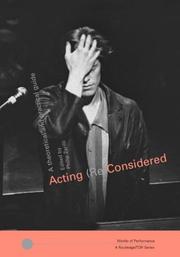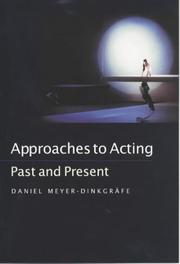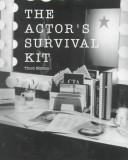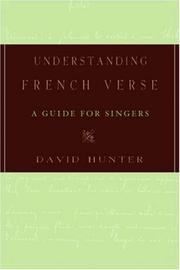| Listing 1 - 10 of 332 | << page >> |
Sort by
|
Book
ISBN: 0761867325 9780761867326 9780761867319 Year: 2016 Publisher: Lanham
Abstract | Keywords | Export | Availability | Bookmark
 Loading...
Loading...Choose an application
- Reference Manager
- EndNote
- RefWorks (Direct export to RefWorks)
This volume reminds readers that dedicated teachers at colleges and universities are passing on the heritage of liberal education as well as constructing its future. All readers will benefit from the insights of this volume the historical, ethical, literary and philosophical perspectives provided by core text liberal arts education.

ISBN: 1134575432 1134575440 1280142006 0203991478 9780203991473 9780415263009 041526300X 0415262992 9780415262996 9786610142002 6610142009 041526300X 9781134575442 9781134575398 1134575394 9781134575435 Year: 2002 Publisher: London New York Routledge
Abstract | Keywords | Export | Availability | Bookmark
 Loading...
Loading...Choose an application
- Reference Manager
- EndNote
- RefWorks (Direct export to RefWorks)
Acting (Re)Considered is an exceptionally wide-ranging collection of theories on acting, ideas about body and training, and statements about the actor in performance. This second edition includes five new essays and has been fully revised and updated, with discussions by or about major figures who have shaped theories and practices of acting and performance from the late nineteenth century to the present.The essays - by directors, historians, actor trainers and actors - bridge the gap between theories and practices of acting, and between East and West. No other book provides such
Acting. --- Histrionics --- Stage --- Elocution --- Theater
Book
ISBN: 0857010840 9780857010841 1848190972 9781848190979 Year: 2016 Publisher: London, UNKNOWN Singing Dragon
Abstract | Keywords | Export | Availability | Bookmark
 Loading...
Loading...Choose an application
- Reference Manager
- EndNote
- RefWorks (Direct export to RefWorks)
Acting. --- Histrionics --- Stage --- Elocution --- Theater

ISBN: 0826449018 1283202298 9786613202291 1441103813 9781441103819 0826478794 082644900X 9780826449009 9780826449016 Year: 2001 Publisher: London New York Continuum
Abstract | Keywords | Export | Availability | Bookmark
 Loading...
Loading...Choose an application
- Reference Manager
- EndNote
- RefWorks (Direct export to RefWorks)
For centuries the theatre has been one of the major forms of art. How did acting, and its institutionalization in the theatre, begin in the first place? In some cultures complex stories relate the origin of acting and the theatre. And over time, approaches to acting have changed considerably. In the West, until the end of the 19th century, those changes occurred within the realm of acting itself, focusing on the question of whether acting should be 'natural' or 'formal.' Approaches to acting were closely related to the trends in culture at large. Acting became more and more professional and so
Book
ISBN: 9789503412435 Year: 2015 Publisher: Universidad Nacional de La Plata. Facultad de Humanidades y Ciencias de la Educación
Abstract | Keywords | Export | Availability | Bookmark
 Loading...
Loading...Choose an application
- Reference Manager
- EndNote
- RefWorks (Direct export to RefWorks)
The book addresses the problem of the subject from the figure of ventriloquism. In a general sense, an attempt is made to think of the history of Western man from the tension of two discursive voices or poles (the muthos and the logos ) and the subject (the man) as the effect or result of that tension. The central hypothesis is that in the face of the hegemonic tradition of “logocentrism”, which tries to reduce the plurality of meaning to a single voice (the logos ) and to constitute history as a history of that only meaning, it is possible to detect a second voice ( the muthos ), heterogeneous and so to speak peripheral, which subverts, at each historical moment, the strategies of the logosdominant. This second voice also finds its paradigmatic place in the figure of the ventriloquist. The text proposes, from this perspective, to make a reconstruction of this curious figure, to show that the human, that is, the different images or conceptions that man has formed of himself throughout history are, in truth, the product or the effect of the tension between these two voices or phonetic principles. This tension between the muthos and the logos , in each historical epoch, is embodied in certain paradigmatic figures: the fortune teller and the prophet; the witch and the inquisitor; the possessed and the exorcist; the magnetic sleepwalker and the doctor; the schizophrenic and the psychiatrist, etc. As well as the voice of the logosit finds its place of origin in the mouth, likewise the muthos finds its place, according to the etymology of the term "ventriloquism", in the womb. The human, consequently, is nothing but the rest or, better still, the residue or the sequel of the joints and disarticulations that historically occur between the mouth and the belly, between the logos and the muthos .
Ventriloquism. --- Amusements --- Elocution --- Voice --- Ventriloquia --- Sujeto

ISBN: 1554883067 1281957623 9786611957629 1282815024 9786612815027 1770700412 9781554883066 9781554886036 1554886031 088924278X 9780889242784 Year: 1999 Publisher: Toronto Simon & Pierre
Abstract | Keywords | Export | Availability | Bookmark
 Loading...
Loading...Choose an application
- Reference Manager
- EndNote
- RefWorks (Direct export to RefWorks)
Acting --- Histrionics --- Stage --- Elocution --- Theater --- Vocational guidance
Book
ISBN: 1299463886 0300163010 9780300163018 9780300136999 0300136994 0300171293 9780300171297 9781299463882 Year: 2010 Publisher: New Haven [Conn.] Yale University Press
Abstract | Keywords | Export | Availability | Bookmark
 Loading...
Loading...Choose an application
- Reference Manager
- EndNote
- RefWorks (Direct export to RefWorks)
First performed at the midpoint of the twentieth century, John Cage's 4'33", a composition conceived of without a single musical note, is among the most celebrated and ballyhooed cultural gestures in the history of modern music. A meditation on the act of listening and the nature of performance, Cage's controversial piece became the iconic statement of the meaning of silence in art and is a landmark work of American music.In this book, Kyle Gann, one of the nation's leading music critics, explains 4'33" as a unique moment in American culture and musical composition. Finding resemblances and resonances of 4'33" in artworks as wide-ranging as the paintings of the Hudson River School and the music of John Lennon and Yoko Ono, he provides much-needed cultural context for this fundamentally challenging and often misunderstood piece. Gann also explores Cage's craft, describing in illuminating detail the musical, philosophical, and even environmental influences that informed this groundbreaking piece of music. Having performed 4'33" himself and as a composer in his own right, Gann offers the reader both an expert's analysis and a highly personal interpretation of Cage's most divisive work.
Acting. --- Histrionics --- Stage --- Elocution --- Theater --- Cage, John.
Periodical
ISSN: 26428857 Year: 1960 Publisher: Kalamazoo, Mich. : Kalamazoo, Mich. : Kalamazoo, Mich. : Kalamazoo, Mich : Psycho-Educational Clinic and the Western Michigan University Chapter of the International Reading Association, Kalamazoo, Mich. Western Michigan University Press College of Education at Western Michigan University Dorothy J. McGinnis Reading Center and Clinic
Abstract | Keywords | Export | Availability | Bookmark
 Loading...
Loading...Choose an application
- Reference Manager
- EndNote
- RefWorks (Direct export to RefWorks)
Reading --- Lecture --- Reading. --- Language arts --- Elocution --- Study and teaching

ISBN: 1280428341 142376188X 0198039360 1602565333 9781423761884 9781602565333 9781280428340 0195177169 9780195177169 0190292148 0197729517 Year: 2023 Publisher: New York ; Oxford University Press,
Abstract | Keywords | Export | Availability | Bookmark
 Loading...
Loading...Choose an application
- Reference Manager
- EndNote
- RefWorks (Direct export to RefWorks)
This guide is aimed at singers & singing teachers interested in French song repertoire. In a clear & concise way, using examples from well-known song settings, it sets out the basics of French versification, showing how an understanding of verse techniques can enhance the interpretation of the French 'm�elodie'.
French language --- Singing --- Musical declamation --- Diction --- Elocution --- Versification. --- Diction.
Book
ISBN: 1283924331 1574414550 9781574414554 9781283924337 9781574414479 157441447X Year: 2012 Publisher: Denton, Tex. University of North Texas Press
Abstract | Keywords | Export | Availability | Bookmark
 Loading...
Loading...Choose an application
- Reference Manager
- EndNote
- RefWorks (Direct export to RefWorks)
Ventriloquism --- Ventriloquists --- Fatherhood --- Amusements --- Elocution --- Voice --- Actors --- Entertainers --- Parenthood
| Listing 1 - 10 of 332 | << page >> |
Sort by
|

 Search
Search Feedback
Feedback About UniCat
About UniCat  Help
Help News
News